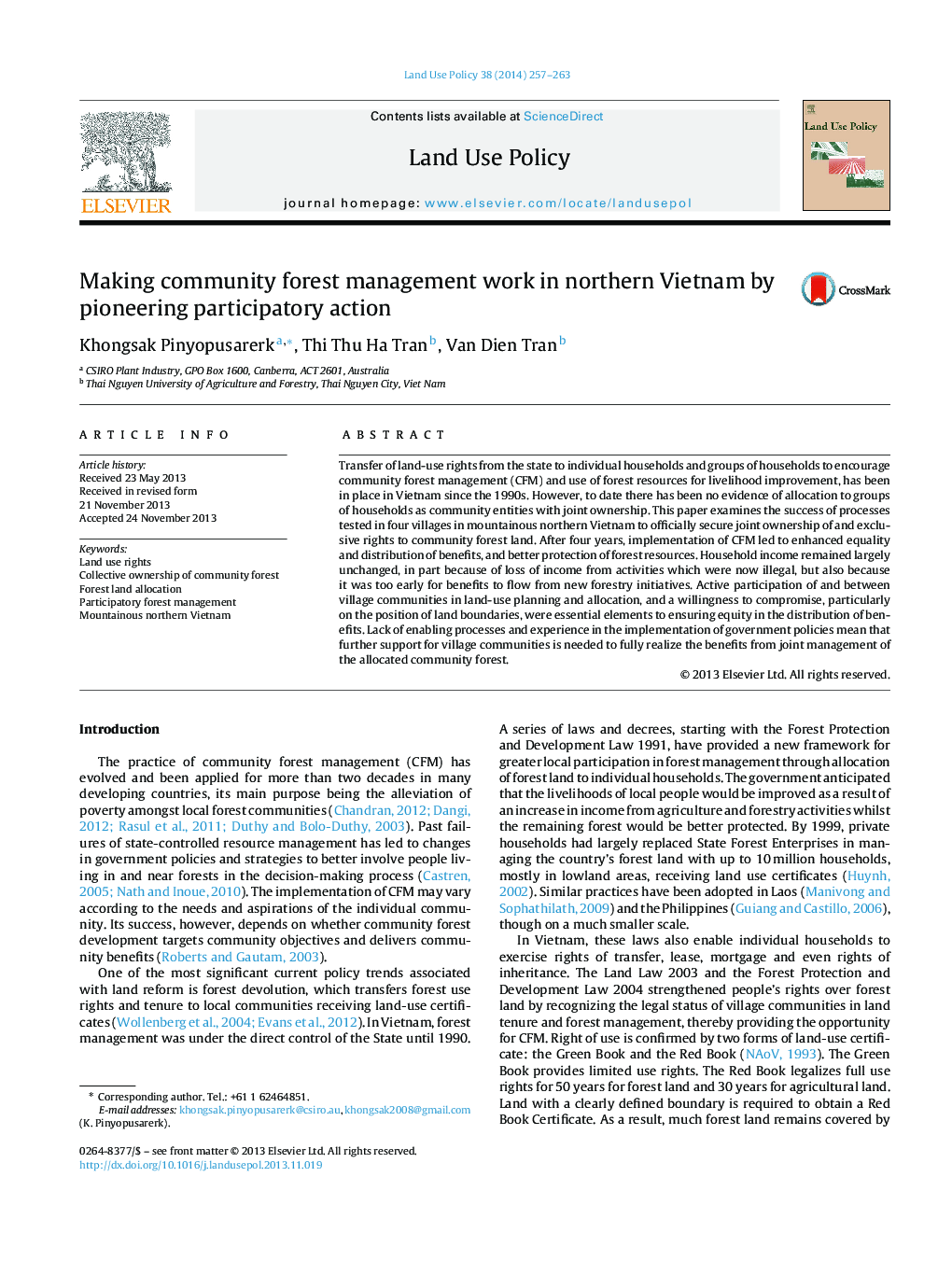| Article ID | Journal | Published Year | Pages | File Type |
|---|---|---|---|---|
| 6548764 | Land Use Policy | 2014 | 7 Pages |
Abstract
Transfer of land-use rights from the state to individual households and groups of households to encourage community forest management (CFM) and use of forest resources for livelihood improvement, has been in place in Vietnam since the 1990s. However, to date there has been no evidence of allocation to groups of households as community entities with joint ownership. This paper examines the success of processes tested in four villages in mountainous northern Vietnam to officially secure joint ownership of and exclusive rights to community forest land. After four years, implementation of CFM led to enhanced equality and distribution of benefits, and better protection of forest resources. Household income remained largely unchanged, in part because of loss of income from activities which were now illegal, but also because it was too early for benefits to flow from new forestry initiatives. Active participation of and between village communities in land-use planning and allocation, and a willingness to compromise, particularly on the position of land boundaries, were essential elements to ensuring equity in the distribution of benefits. Lack of enabling processes and experience in the implementation of government policies mean that further support for village communities is needed to fully realize the benefits from joint management of the allocated community forest.
Related Topics
Life Sciences
Agricultural and Biological Sciences
Forestry
Authors
Khongsak Pinyopusarerk, Thi Thu Ha Tran, Van Dien Tran,
